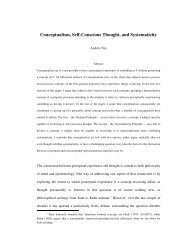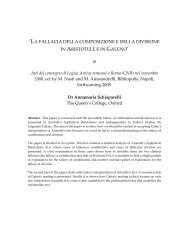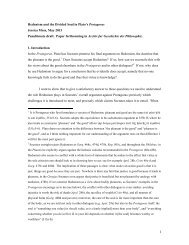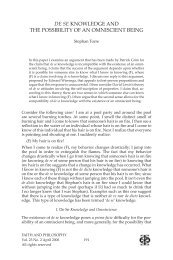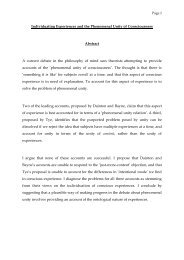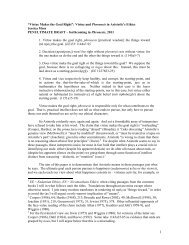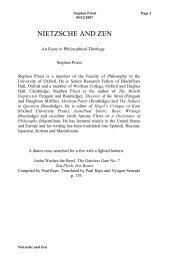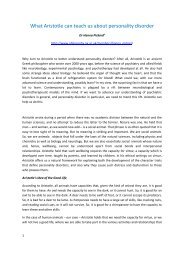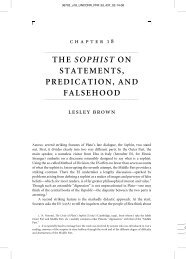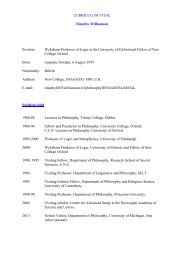Between Saying and Doing: Towards an Analytic Pragmatism
Between Saying and Doing: Towards an Analytic Pragmatism
Between Saying and Doing: Towards an Analytic Pragmatism
Create successful ePaper yourself
Turn your PDF publications into a flip-book with our unique Google optimized e-Paper software.
Br<strong><strong>an</strong>d</strong>om<br />
vocabularies to the other. But if we step back from the context provided by the Chomsky hierarchy, we c<strong>an</strong> see why<br />
the possibility of such pragmatic expressive bootstrapping should not, in the end, be surprising. For all the result<br />
really me<strong>an</strong>s is that context-free vocabularies let one say what it is one must do in order to say things they c<strong>an</strong>not<br />
themselves say, because the ability to deploy those context-free vocabularies does not include the abilities those<br />
vocabularies let one specify. Thus, for inst<strong>an</strong>ce, there is no reason that <strong>an</strong> FSA could not read <strong><strong>an</strong>d</strong> write a<br />
vocabulary that included comm<strong><strong>an</strong>d</strong>s such as “Push <strong>an</strong> ‘a’ onto the stack,”—<strong><strong>an</strong>d</strong> thus specify the program of a<br />
PDA—even though it itself has no stack, <strong><strong>an</strong>d</strong> could not do what the vocabulary it is deploying specifies. More<br />
generally, a coach might be able to tell <strong>an</strong> athlete exactly what to do, <strong><strong>an</strong>d</strong> even how to do it, even though the coach<br />
c<strong>an</strong>not himself do what he is telling the athlete to do, does not have the abilities he is specifying. We ought not to<br />
boggle at the possibility of <strong>an</strong> expressively weaker pragmatic metavocabulary having the capacity to say what one<br />
must do in order to deploy <strong>an</strong> expressively stronger one. We should just look to see where this seems in fact to be<br />
possible for vocabularies we care about, <strong><strong>an</strong>d</strong> what we c<strong>an</strong> learn from such relations when they do obtain.<br />
Section 6: Looking Ahead<br />
Let us recall what motivated this rehearsal of some elements of automaton theory <strong><strong>an</strong>d</strong><br />
introductory computational linguistics. I suggested that a way to extend the classical project of<br />
sem<strong>an</strong>tic <strong>an</strong>alysis so as to take account of the insights of its pragmatist critics is to look<br />
<strong>an</strong>alytically at relations between me<strong>an</strong>ing <strong><strong>an</strong>d</strong> use. More specifically, I suggested focusing to<br />
begin with on two in some sense complementary relations: the one that holds when some set of<br />
practices-or-abilities is PV-sufficient to deploy a given vocabulary, <strong><strong>an</strong>d</strong> the one that holds when<br />
some vocabulary is VP-sufficient to specify a given set of practices-or-abilities. The composition<br />
of these is the simplest pragmatically mediated sem<strong>an</strong>tic relation between vocabularies: the<br />
relation that holds when one vocabulary is a sufficient pragmatic metavocabulary for <strong>an</strong>other. It<br />
is a paradigm of the infinite, recursively generable class of complex, pragmatically mediated<br />
LL1 Text.rtf 32 11/8/2007



